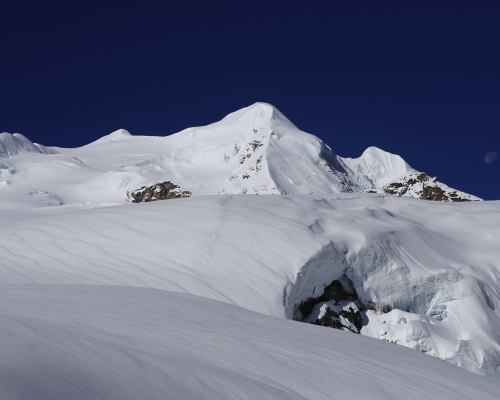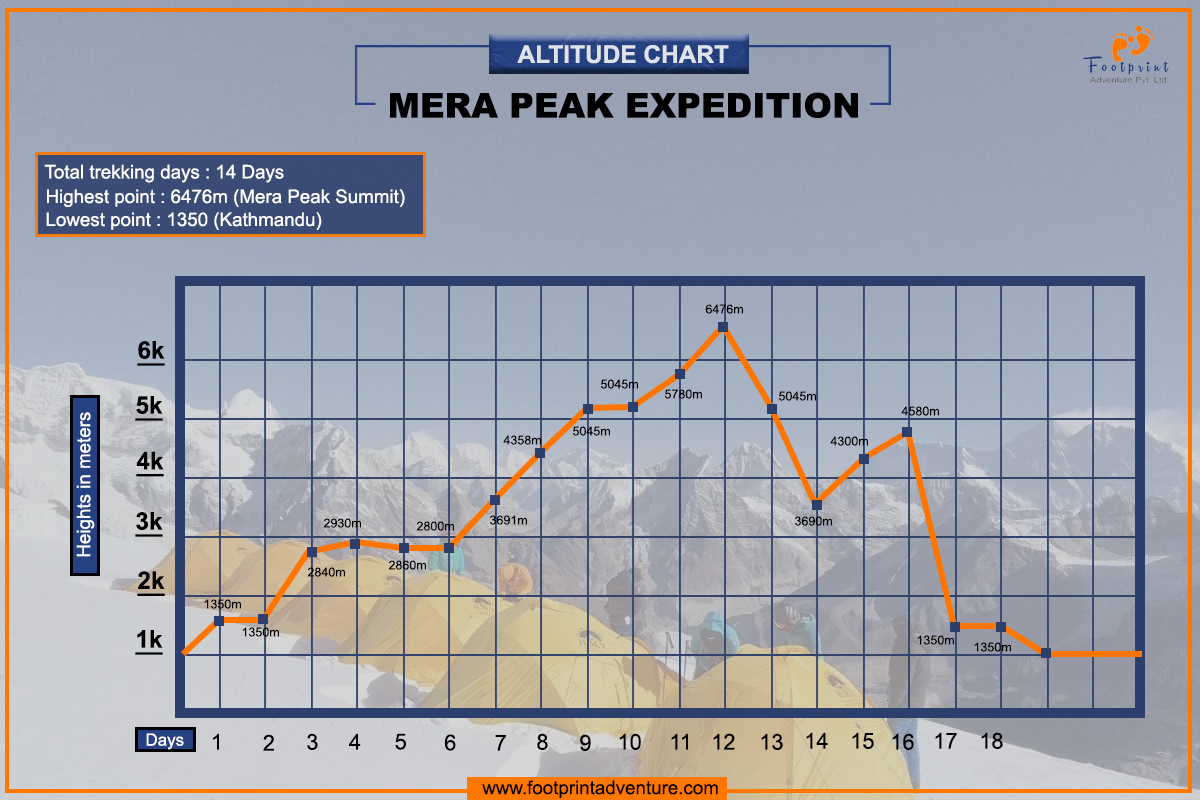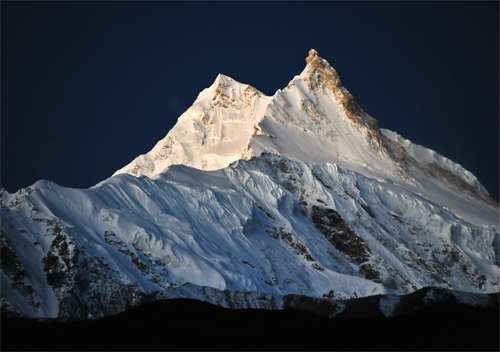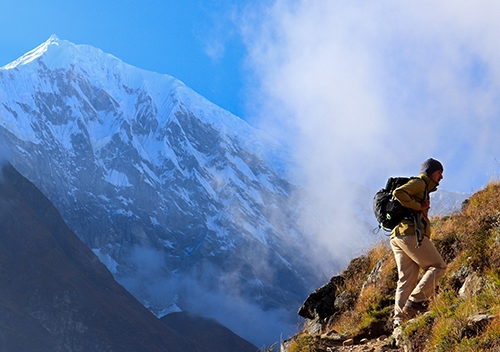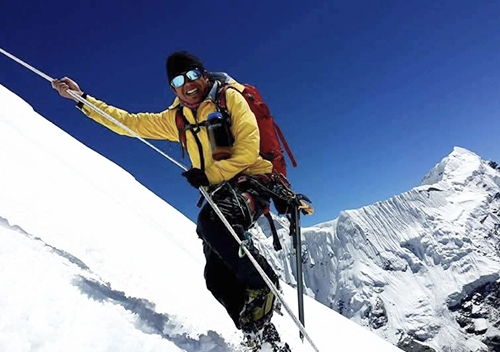Mera Peak Expedition is one of the most exciting and adventurous expeditions in the Khumbu region of Nepal. Mera Peak climb is popular for being the highest permitted trekking peak in Nepal and offers spectacular, close-up, wide views of five of the world’s tallest mountains, including Mount Everest, Kanchenjunga, Makalu, Lhotse, and Cho Oyu, along with many other peaks in the Khumbu region.
Mera Peak (6,476 m) is the highest peak among those peaks open for climbing between 6,000 and 8,000 meters in Nepal. Located south of Mount Everest, the Mera Peak climbing trip is one of the most frequently organized expeditions by Footprint Adventure, alongside the Mera and Island Peak climbing trips. This peak was reportedly first explored and successfully ascended by a British team in the 1950s. Since then, Mera Peak has become one of the most sought-after climbing peaks in the Khumbu region of Nepal.
Most trekkers summit Mera Peak via the North face. Mera Peak has three summits: Mera North, Mera Central, and Mera South. The most accessible and commonly climbed route is to the Central summit, reached from the North Face. The trek follows the off-the-beaten paths of the Hinku Valley, crossing alpine forests, streams, meadows, and typical villages. Guesthouses are primarily utilized for nights, with necessary acclimatization at higher altitudes. The climb is filled with icy trails, slippery rocks, and foggy slopes, but the reward at the top is stunning views of dozens of great Himalayan peaks.
The journey begins with a scenic flight from Kathmandu to Lukla and then trekking through Pangkongma, Gnashing Dingma, Chalem Kharka, Chunbu Kharka (acclimatization), and further along Hinku Valley, Tangnag, Dig Kharka, and Khare to Mera Peak Base Camp (5,300m). After a further acclimatization, you'll move to High Camp (5,800m) before the summit climb. From the summit, you can enjoy the stunning Himalayan views before descending back to Lukla and flying back to Kathmandu. Beyond the mountains, you’ll explore Sherpa villages, their rich culture, monasteries, and chortens, and enjoy local food; a truly unforgettable adventure blending nature, culture, and challenge.
Highlights of Mera Peak Expedition
- UNESCO World Heritage Site excursion in Kathmandu.
- The short, scenic, and adventurous flight to the world’s most dangerous airport is Lukla Airport.
- Explore the rich Sherpa and other ethnic communities and their culture.
- A glimpse of the Numbur and Nupla mountains when you land at Lukla Airport.
- Enjoy the acclimatization at the traditional village of Tangnang and explore the stunning views of mountains and glaciers.
- Explore the night landscapes of green forests, Buddhist shrines, and village settlements, along with rich biodiversity.
- Enjoy the 360-degree panoramic views of the world’s highest mountains, such as Everest, Lhotse, Makalu, Cho Oyu, and Kanchenjunga.
Major Highlights of Mera Peak Expedition
Off-The-Beaten Mera Valley
Mera Valley, a hidden village in the Solu-Khumbu region, is considered an off-the-beaten-path trekking destination due to its remote location. Unlike the more popular Everest Base Camp route, the Mera Valley trek remains relatively untouched by mass tourism, offering a more serene trekking experience. The valley is home to traditional Sherpa villages where you can interact with the locals and experience the authentic lifestyle, far removed from the busy tourist trails.
As the Mera Valley is less commercialized, trekkers can enjoy the wilderness in its most unspoiled state. The valley is surrounded by lush forests, alpine meadows, and high-altitude glaciers, making it an ideal route for those seeking isolation and a connection with nature. The quiet beauty of the Mera Valley adds to the charm, offering an immersive experience for adventurers looking for a more remote trek.
Highest Peak Climbing in Nepal
At 6,476 meters (21,247 feet), Mera Peak is the highest trekking peak in Nepal. While the Mera Peak climb is non-technical, it presents a rewarding challenge for trekkers with high-altitude experience. The summit offers breathtaking panoramic views of the world's tallest mountains, including Everest, Lhotse, and Cho Oyu, making it an unforgettable achievement for adventurers.
Who Can Climb Mera Peak, and How to Prepare for a Successful Summit?
The Mera Peak trek is best suited for trekkers with good physical fitness and previous high-altitude trekking experience, preferably over 5,000 meters (16,404 feet). Ascending the 6,476-meter (21,247 feet) peak is physically demanding. There are glacier crossings, high-altitude hiking, and a strenuous summit day that tests physical and mental endurance. Although the climb is non-technical, using tools like crampons, an ice axe, and ropes is highly recommended.
To prepare, climbers must work to build cardiovascular endurance, strength, and endurance by training regularly and focusing on long treks, strength training, and high-altitude acclimatization. It's highly recommended that one start training 3–4 months in advance of the expedition. Learn basic mountaineering skills such as the use of crampons, ice axes, and ropes because they could be essential when climbing. Don't forget to bring sufficient suitable high-quality insulated equipment, quality boots, gloves, a sleeping bag with at least -20°C rating, and a quality headlamp.
Why Choose Footprint Adventure for the Mera Peak Expedition in 2026/2027?
Footprint Adventure is a local team with years of experience guiding climbers to Mera Peak. From the moment you arrive in Nepal, we take care of everything from accommodation to logistics so you can fully focus on the adventure. Each of our itineraries is carefully designed to give you enough time to acclimatize, helping you reach the summit with confidence and comfort. Throughout your journey to Mera Peak, our expert guides stay with you every step of the way, sharing daily briefings, checking your health, and teaching you about Sherpa culture to make your experience even more meaningful. Moreover, our main focus is on responsible tourism and providing personalized care for every climber. So if you are thinking about climbing Mera Peak in 2025 or 2026, get in touch with us. We are here to help you plan a smooth, safe, and stress-free expedition.
When is the Best Time to Do the Mera Peak Expedition?
As spring (March to May) and autumn (September to November) are the peak climbing seasons in Nepal, they are the best times for the Mera Peak expedition as well. During these periods, the weather is stable, with clear skies offering magnificent views of Everest, Makalu, and other Himalayan giants. Trails are lively with trekkers, and the temperatures are moderate, making the journey more comfortable. Winter (December to February) can also be an option for those seeking a less crowded experience, but it comes with challenges like extreme cold and heavy snowfall. On the other hand, the monsoon season (June to August) is generally avoided due to slippery trails, leeches, and reduced visibility caused by frequent rain, which can make the climb unsafe and less enjoyable.

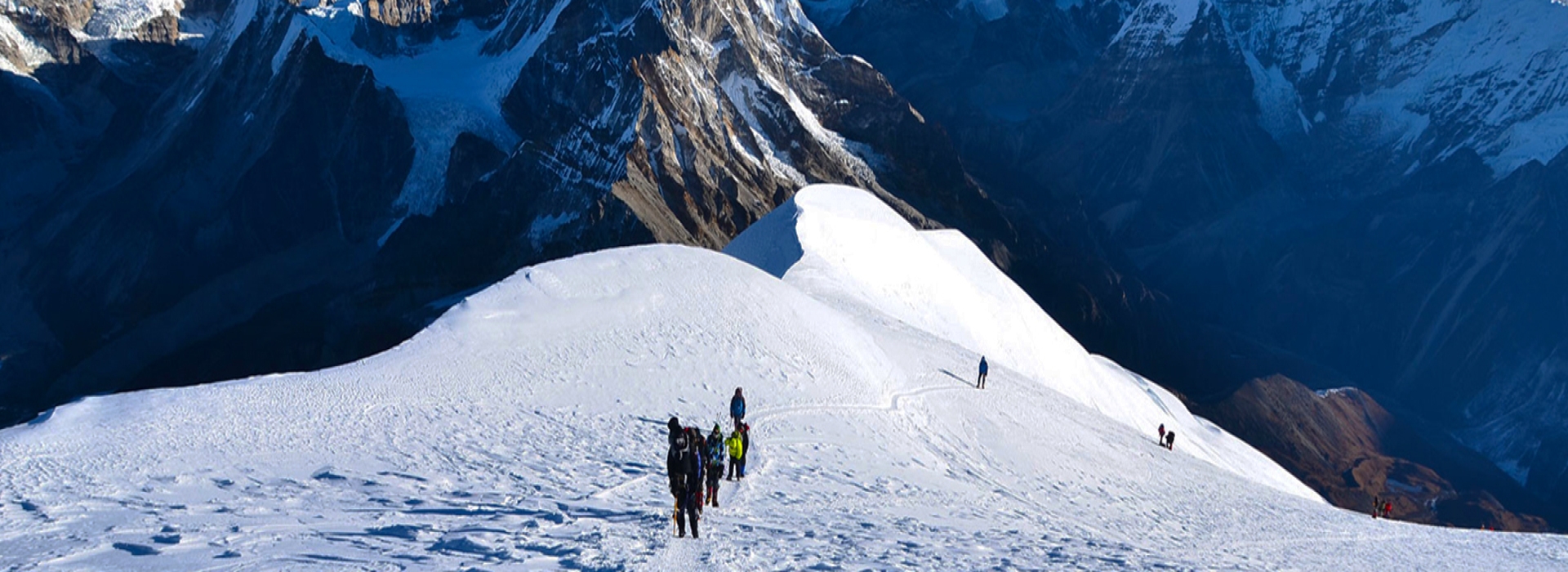
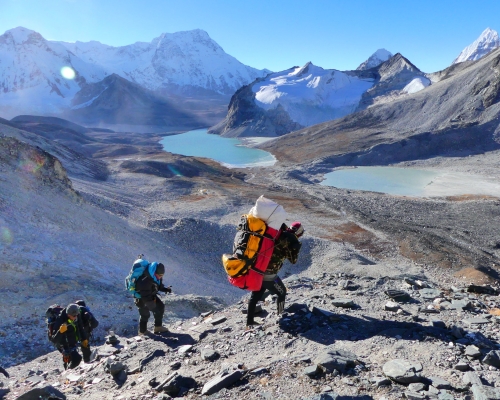
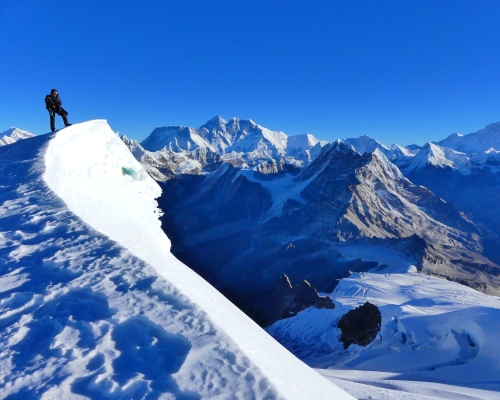

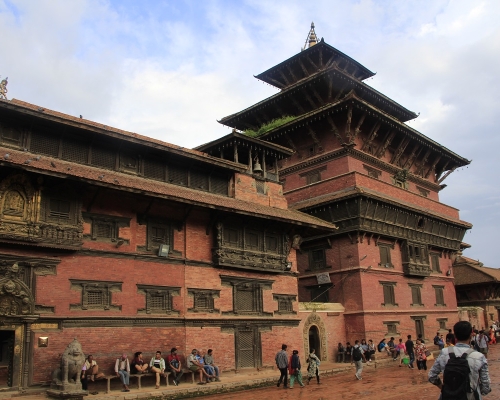

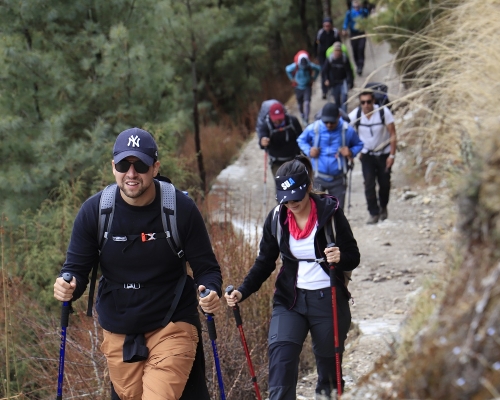

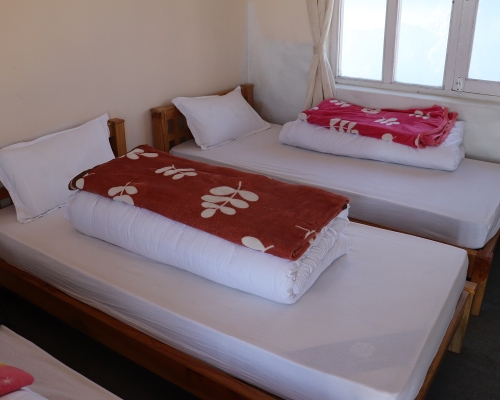
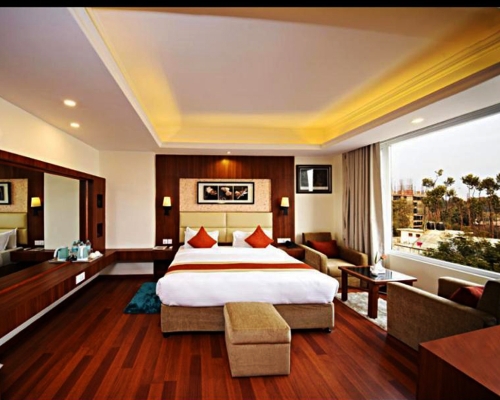
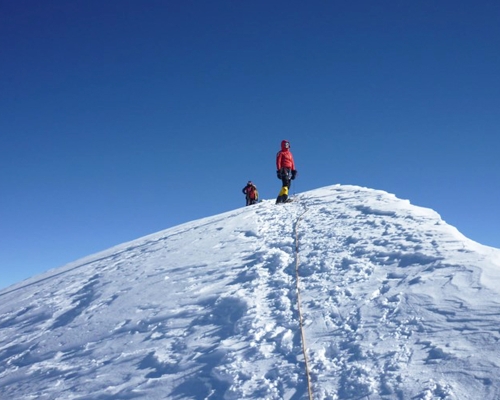
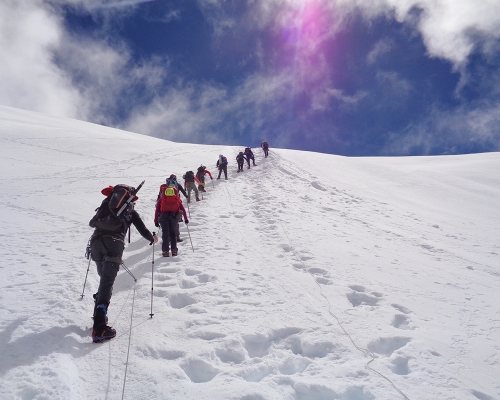
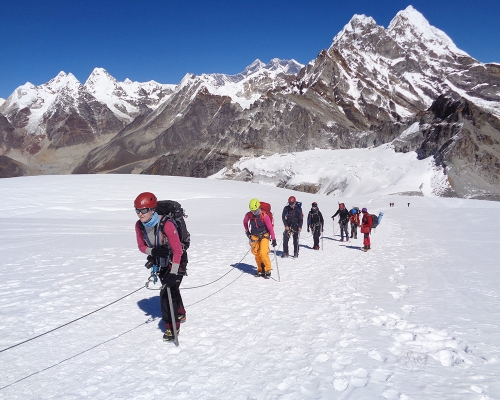



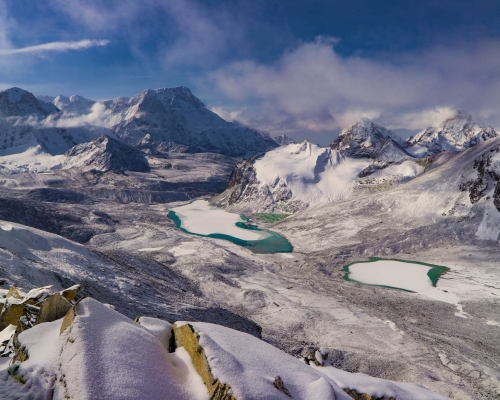
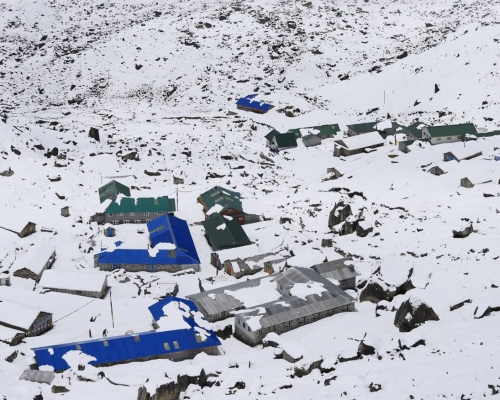
.JPEG)
